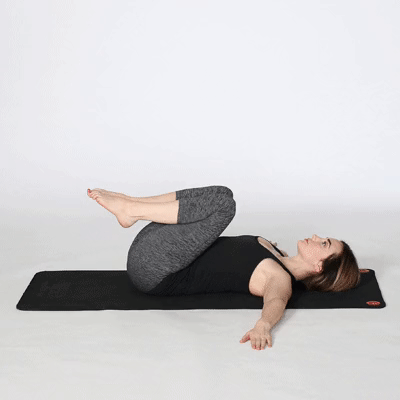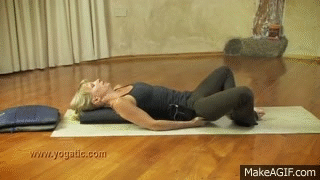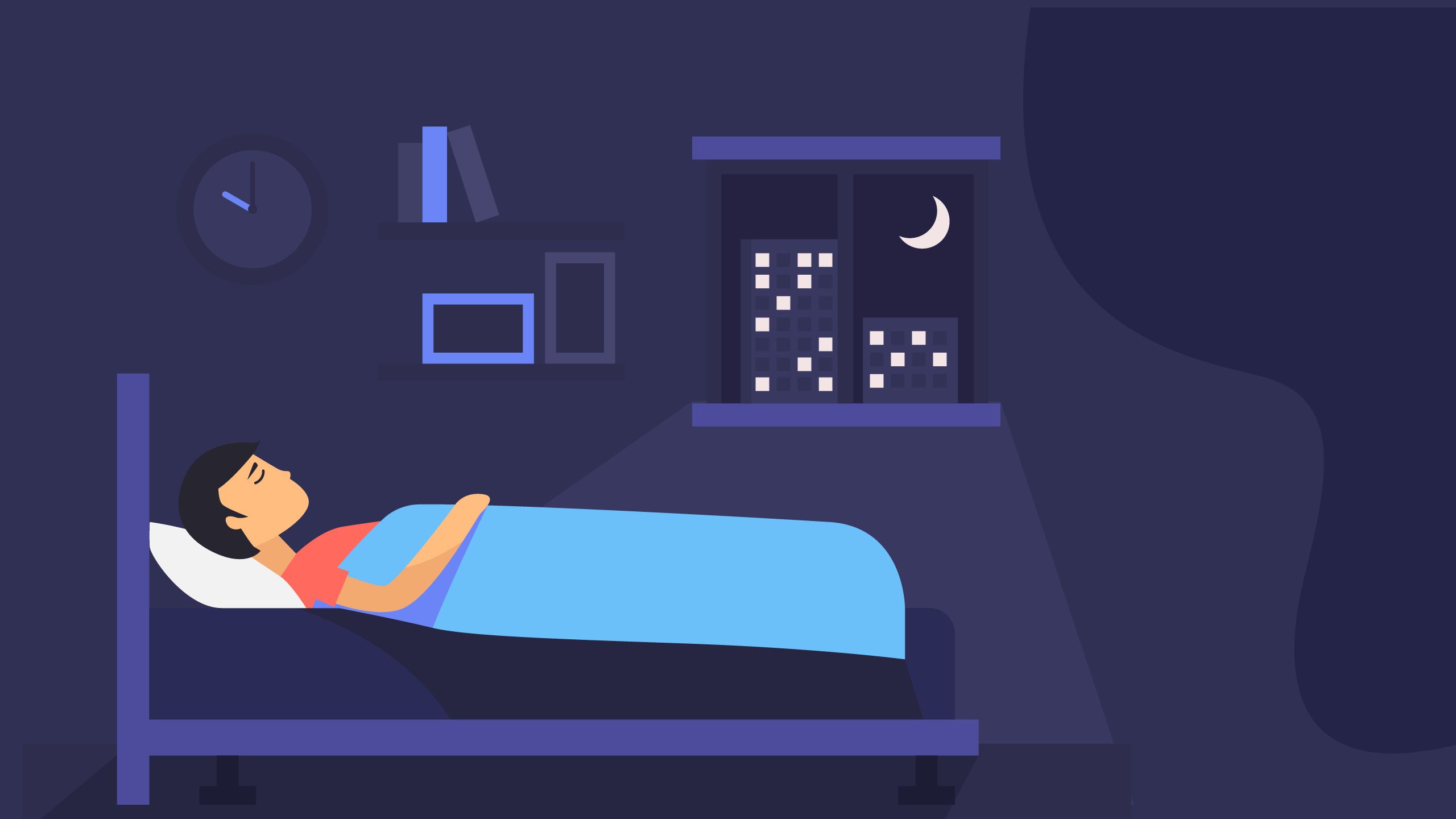I think we can all agree that having quality sleep every day is important, right?
Having a sleepless night will often lead to feeling zombified, cranky, and unproductive the next day. More importantly, it isn’t healthy in the long run. For some, falling asleep and getting quality sleep might be a daily struggle. But here’s a natural way to solve that – yoga! While some yoga poses focus on helping you build strength and energy, there are other yoga poses that can help you relax your body and mind. By getting into the relaxed state, you are able to fall asleep easier, stay in deep sleep, and wake up refreshed for the next day. The best part of it is, you can achieve relaxation and better sleep by doing a short, gentle yoga sequence in the comfort of your own home. Think of it as a healthy, unwinding session after the end of a busy day.
1. Standing Forward Bend (Uttanasana)
Begin with standing with your feet six inches apart. Gently fold your torso towards the ground. Just like all forward bends, the emphasis is on lengthening the torso as you enter the pose fully. With your knees straight, bring your fingers to the floor beside your feet or slightly in front. If you cannot straighten your knees, don’t worry. You can cross your arms and hold the opposite elbows. On Inhale, lengthen the front torso slightly. And on exhale, relax and release into the forward bend a little deeper. Let your head hang between the shoulder blades. Hold this pose for 30 seconds to 1 minute. When coming up, bring your hands to your hips, press your tailbone down into the pelvis and slowly come up with a long front torso. Standing Forward Bend calms the brain and helps relieve stress. This pose also stimulates the liver and kidneys, and stretches the hamstrings, calves, and hips.

2. Cat and Cow Pose (Marjaryasana)
For Cat Pose, start on your hands and knees (tabletop position). Your knees are directly below your hips and your arms straight with your wrists directly under your shoulders. On exhale, round your spine, pull your belly in and release your head towards the floor without forcing your chin to your chest. Make sure to keep your shoulders and knees in the same position. Enter Cow Pose on inhalation by lifting your chest, lower your belly, bring your tailbone up towards the ceiling and look towards the ceiling. Perform this flow for 5 breaths or as long as you like. When you’re done, recover to a tabletop position.
/Fitness_Gif-1500x1000-catcow-5c5c85cac9e77c0001566641.gif)
3. Child’s Pose (Balasana)
From Downward-Facing Dog, simply bend your knees and lower your butt to your heels as you bring your chest toward the floor over your knees. Lower your shoulders and head to the floor. Place your arms along your sides, palms down, or you can support your head by folding your arms under your forehead. Breathe and relax for as long as you need to.It awakens the connection between the breath and body and sends calming energy through all the muscles. It’s an opportunity to get grounded, go inward, and to come out of your busy mind and into your body by awakening your breath from the inside out. Child’s Pose is a great way to take a break and relax during your yoga practice, or anytime you feel tired or overwhelmed. Hold this position for 30 seconds to several minutes or however long you like.

4. Legs Up the Wall Pose (Viparita Karani)
Begin with your legs straight up the wall. Bring your tailbone to the base of the wall as close as possible. If you can, try to have your glutes touching the wall. Make sure to feel comfortable, not stretched. Hold this position for 1 minute or as long as you like.Legs Up the Wall Pose is calming and relaxing. It improves circulation and can help reduce swelling lower extremities by redirecting lymph and other fluids from your ankles, knees, and pelvic organs to your upper body and head. It activates the relaxation response (parasympathetic nervous system) and deactivates the stress response (sympathetic nervous system).

5. Supine Spinal Twist (Supta Matsyendrasana)
Lie on your back and bring your arms out to the sides with the palms facing down. Bend the right knee and place the right foot on the left knee. On exhale, drop the right knee over to the left side of your body. If you’d like a neck stretch, gaze towards your right fingertips. Make sure your shoulders are flat on the floor. Allow gravity to pull your knee down, so you don’t have to use any effort. Close your eyes and relax into the posture. Hold this position for 1 minute or as long as you like. To come out, roll the right hips back and right legs back down to the floor. Repeat on the other side.Supta Matsyendrasana stretches the glutes, chest, and obliques. Because of the chest stretch, it is considered a heart opener. It improves spinal mobility and can aid digestion. It is a relaxing pose at the end of a yoga session.

6. Happy Baby Pose (Ananda Balasana)
Lie on your back and bend your knees into your belly. Grasp the insides of your feet with your hands. Then pull your heels up to the ceiling while keeping your tailbone down. Your ankles are directly over your knees and your knees should be pulled towards your armpit area. Keep your heels flexed. Rock back and forth gently to massage the spine. Hold this pose for 1 minute or as long as you like.

7. Reclining Bound Angle Pose (Supta Baddha Konasana)
Continue from the previous Happy Baby pose, let your feet down to the ground. Bring the soles of the feet together so that they touch each other. Let gravity pull your knees down while keeping your heels close to your pelvis. The key here is to feel as comfortable as possible. Breathe deeply and evenly. Close your eyes and relax deep into the posture. Stay in this pose for 5 minutes.

8. Corpse Pose (Savasana)
From the previous Reclined Bound Angle Pose, release both legs down to the corner of your bed or mat. Keep your groins soften and feet turn out. Place your hands a few inches away from your hips with both your palms facing the ceiling. Close your eyes and let your mind free of any thoughts. Breathe deeply and naturally. Hold this pose as long as you like.When you do this practice day after day, it conditions the body to release stress. It can also improve your sense of physical and emotional well-being.They also help relax the diaphragm, so the breath can move freely.

